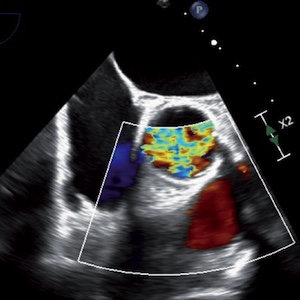Incidental identification of an aorto-right ventricular fistula formation years post TAVR

All claims expressed in this article are solely those of the authors and do not necessarily represent those of their affiliated organizations, or those of the publisher, the editors and the reviewers. Any product that may be evaluated in this article or claim that may be made by its manufacturer is not guaranteed or endorsed by the publisher.
Data Availability Statement
All data generated or analyzed during this case report are included in this published article. Additional data is available from the corresponding author upon reasonable request.
Authors
Transcatheter aortic valve replacement (TAVR) is a minimally invasive procedure for treating aortic stenosis. However, it can lead to complications, such as ventricular septal defects (VSD). Although rare, these defects may result in hemodynamic instability and require intervention. An 82-year-old male with a history of Edwards SAPIEN TAVR and heart failure presented with dyspnea, fatigue, and complete heart block. An electrocardiogram showed a heart block, and a transesophageal echocardiogram revealed a mild paravalvular leak and an outlet VSD at the aortic annulus. Cardiac catheterization confirmed a Qp/Qs ratio of 1.68. After pacemaker implantation, the patient remained stable, and conservative management was pursued with outpatient follow-up. Aorto-right ventricular fistula is a rare late complication of TAVR. Clinicians should consider VSD in patients with complete heart block and a TAVR history, and regular echocardiographic surveillance may be warranted for symptomatic patients.
How to Cite

This work is licensed under a Creative Commons Attribution-NonCommercial 4.0 International License.






